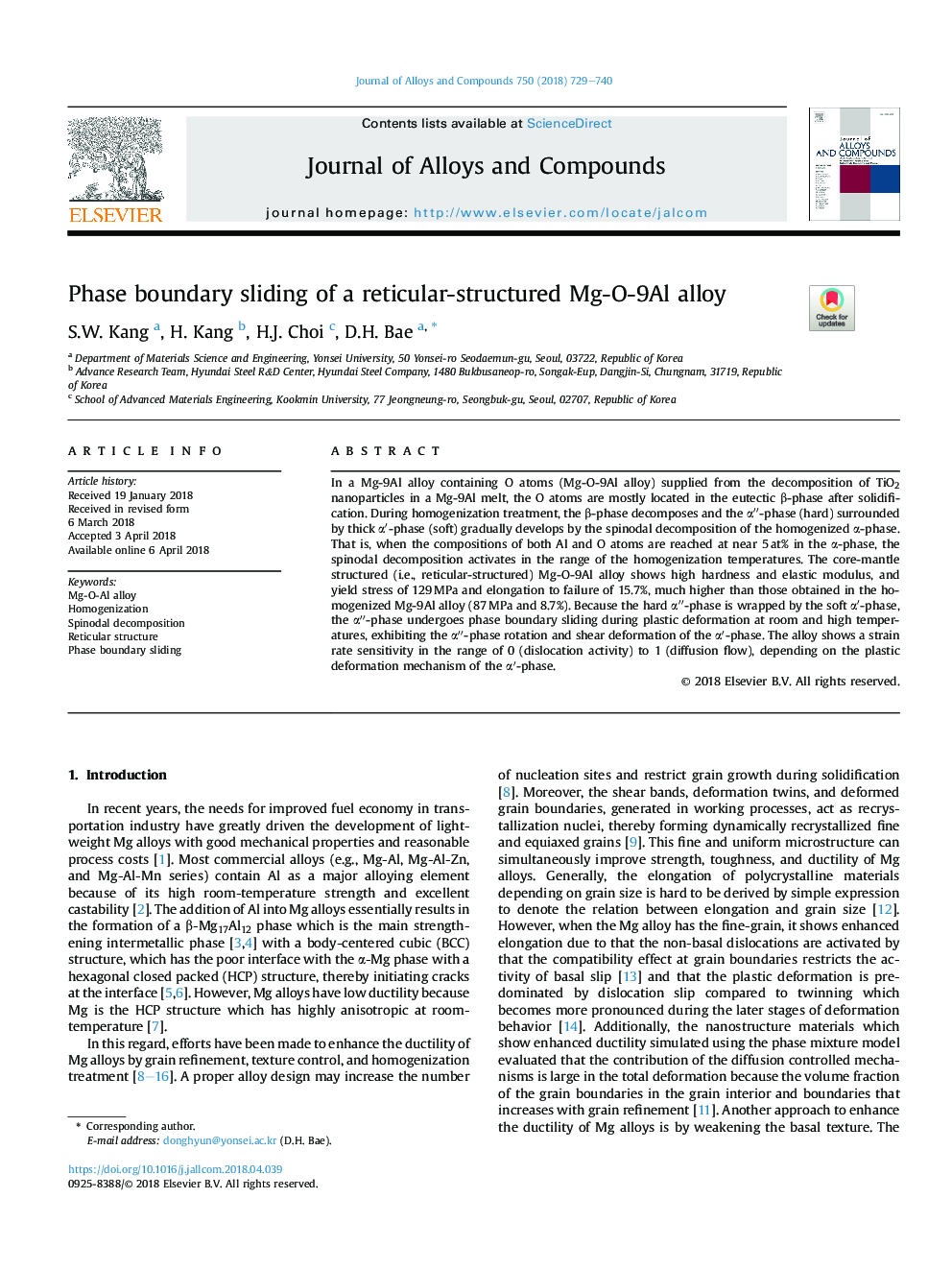| Article ID | Journal | Published Year | Pages | File Type |
|---|---|---|---|---|
| 7991924 | Journal of Alloys and Compounds | 2018 | 12 Pages |
Abstract
In a Mg-9Al alloy containing O atoms (Mg-O-9Al alloy) supplied from the decomposition of TiO2 nanoparticles in a Mg-9Al melt, the O atoms are mostly located in the eutectic β-phase after solidification. During homogenization treatment, the β-phase decomposes and the αâ²â²-phase (hard) surrounded by thick αâ²-phase (soft) gradually develops by the spinodal decomposition of the homogenized α-phase. That is, when the compositions of both Al and O atoms are reached at near 5â¯at% in the α-phase, the spinodal decomposition activates in the range of the homogenization temperatures. The core-mantle structured (i.e., reticular-structured) Mg-O-9Al alloy shows high hardness and elastic modulus, and yield stress of 129â¯MPa and elongation to failure of 15.7%, much higher than those obtained in the homogenized Mg-9Al alloy (87â¯MPa and 8.7%). Because the hard αâ²â²-phase is wrapped by the soft αâ²-phase, the αâ²â²-phase undergoes phase boundary sliding during plastic deformation at room and high temperatures, exhibiting the αâ²â²-phase rotation and shear deformation of the αâ²-phase. The alloy shows a strain rate sensitivity in the range of 0 (dislocation activity) to 1 (diffusion flow), depending on the plastic deformation mechanism of the αâ²-phase.
Keywords
Related Topics
Physical Sciences and Engineering
Materials Science
Metals and Alloys
Authors
S.W. Kang, H. Kang, H.J. Choi, D.H. Bae,
